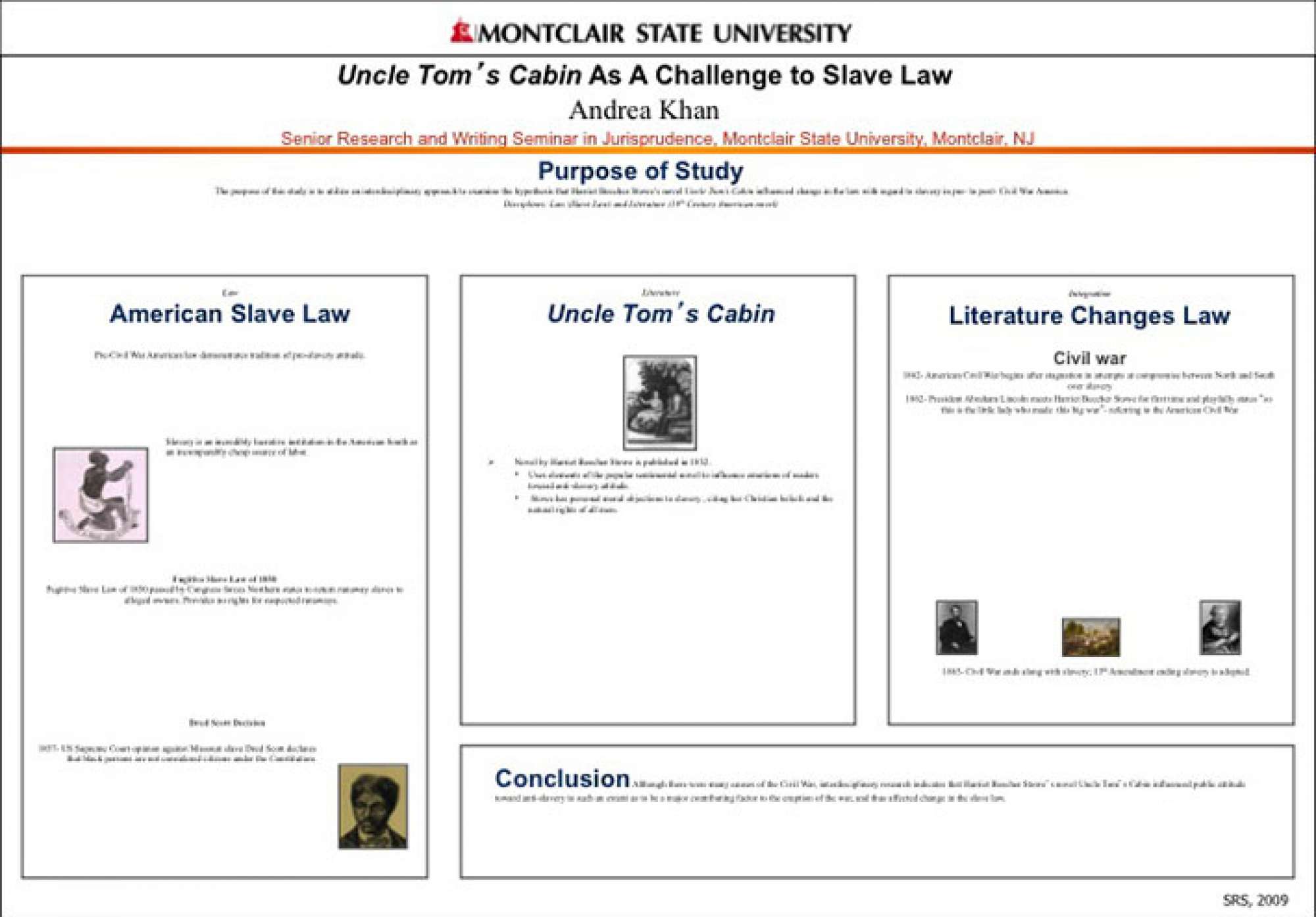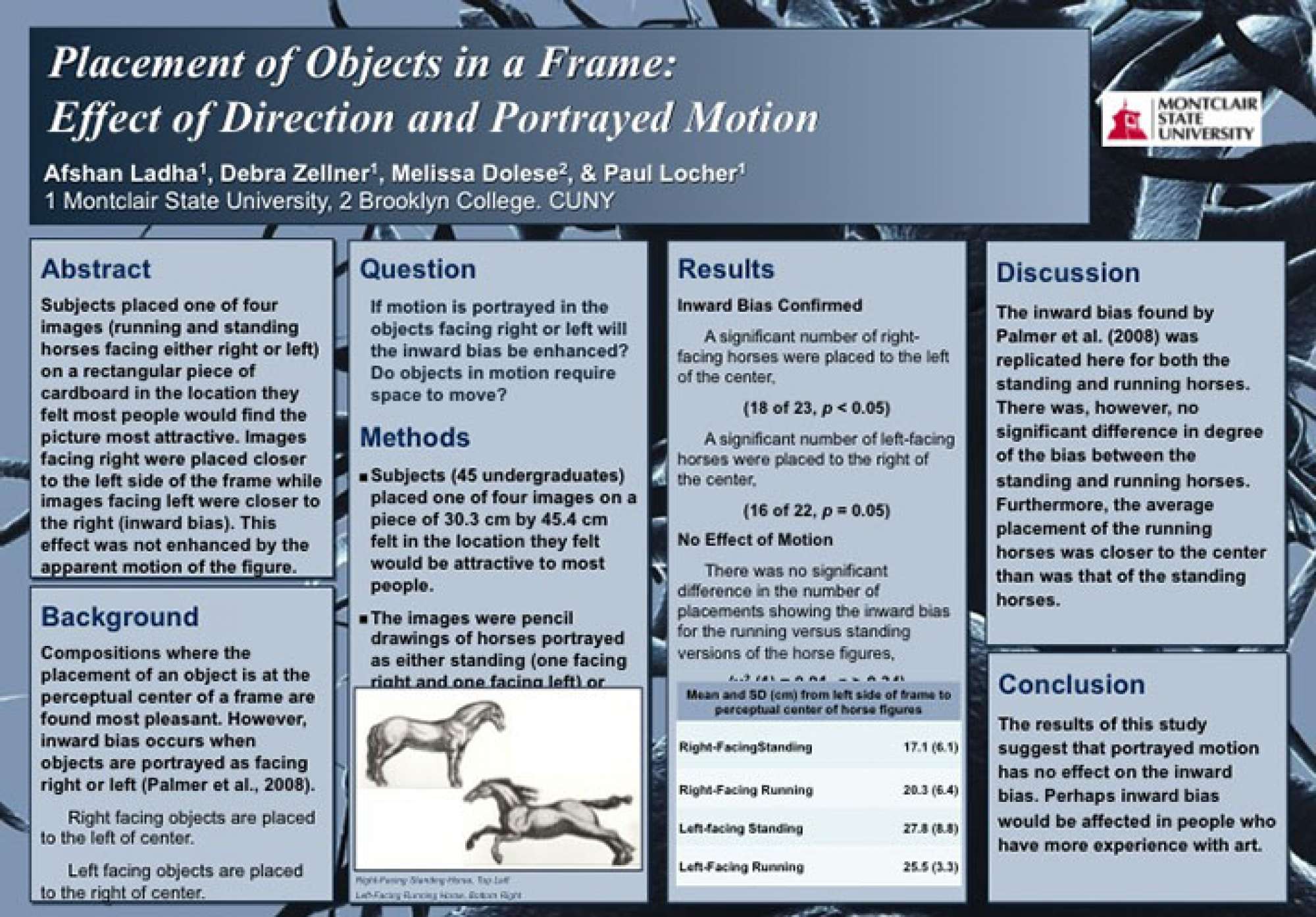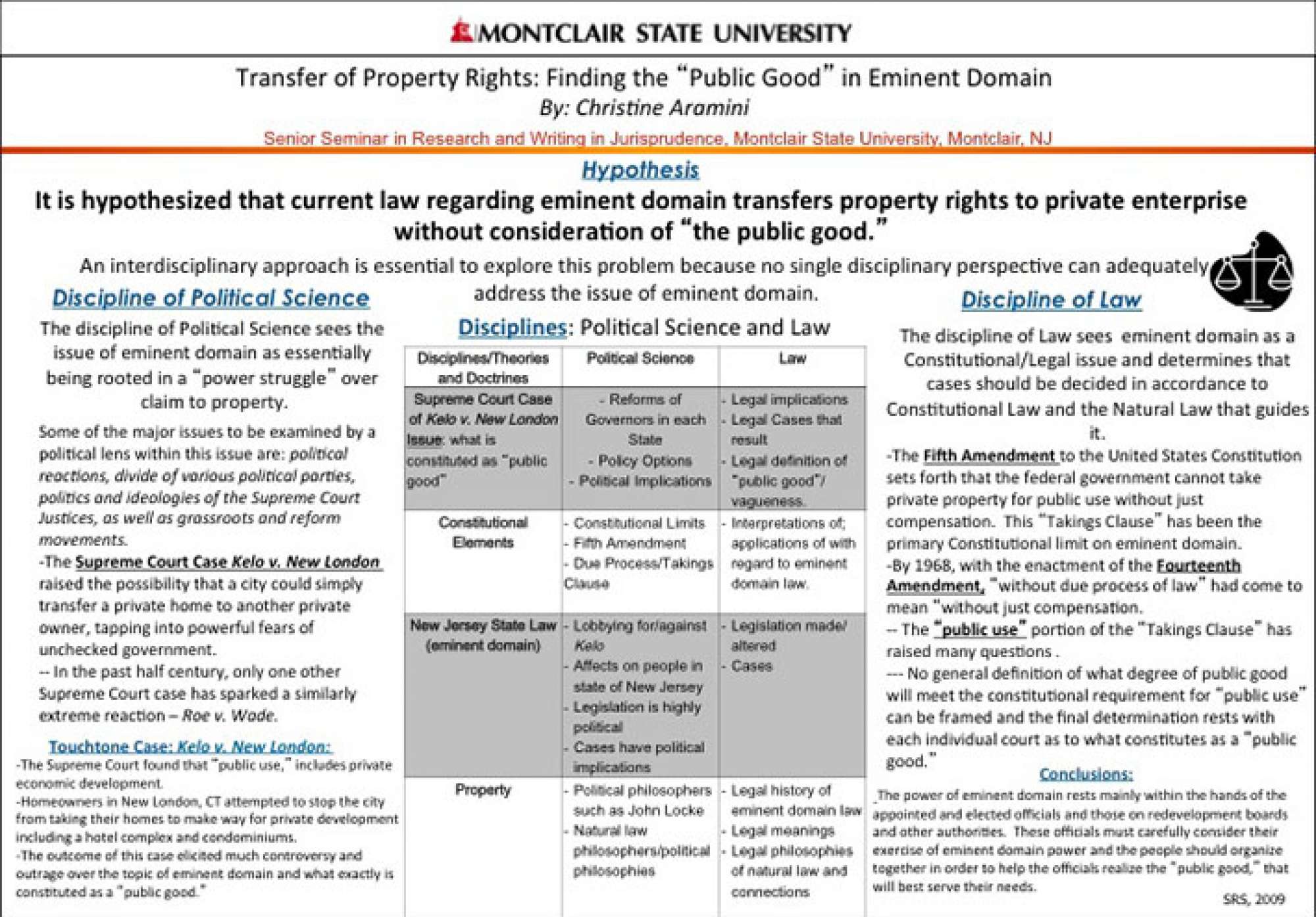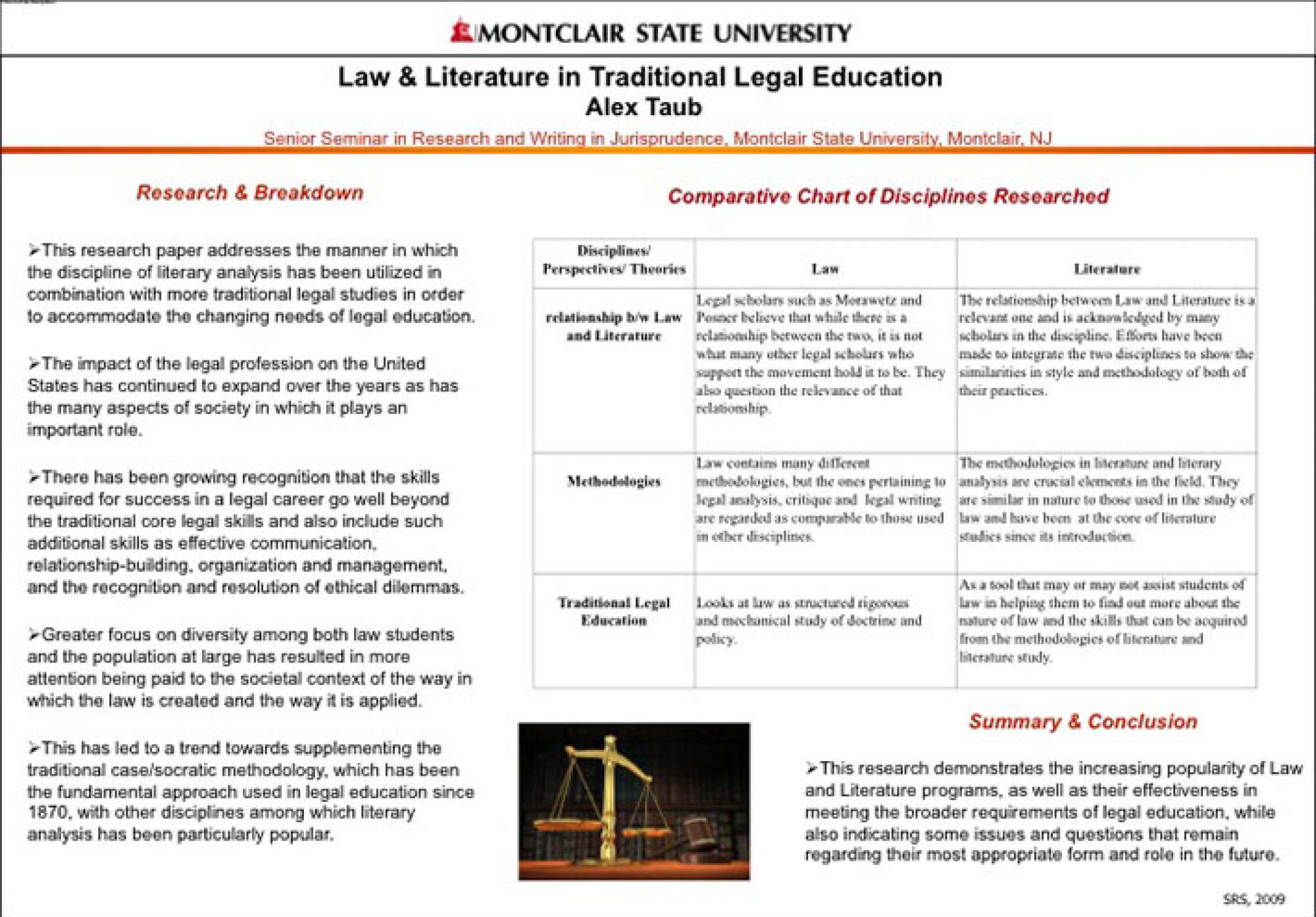You’re invited to participate in this year’s university-wide Student Research Symposium on Friday, April 26th, 2024. The symposium offers an excellent opportunity for undergraduate and graduate students to display their research and gain valuable presentation experience. All disciplines are welcome!
Abstract submission is now closed!
The following information is required for submission:
- Name, email and school/college of student author (and student co-authors, if any).
- REMINDER: All students submitting an abstract will need a Cayuse IRB account. Request your account here.
- Name, email and school/college of faculty advisor (and additional faculty research team members, if any).
- Institutional Review Board approval if using human subjects in the study.
- If you are unsure about whether or not your project requires IRB approval, or if you have any questions, please do not hesitate to contact the IRB office.
- Institutional Animal Care and Use Committee (ICAUC) approval if using non-human vertebrate animals in the study.
- If you are unsure about whether or not your project requires IACUC approval, or if you have any questions, please do not hesitate to contact the IACUC office.
- Presentation title.
- All presentation titles should start with “SRS” (example: “SRS – Title of Research Project”).
- Course and professor name, if you are presenting your research as a part of a course (example: “ANTH 100, Dr. Professor Name”).
- A 250-word (maximum) abstract. Please include the following sections:
- An Introduction section that provides an overview of your project, research questions or hypotheses.
- A Methods section that covers the methodology of your research and/or the method used to collect the data.
- Finally, a Results section that summarizes the results of your research, the conclusions and outcomes, and the implications of the research based on your data. If you do not have results at the point of submission, please let us know when you anticipate having data analysis completed.
For any questions, please email irbassistant@montclair.edu or reviewboard@montclair.edu.
- Because of the size of the panels where the posters will be displayed, the poster dimensions should not exceed 28.7″W x 40.6″L (portrait) or 40.6″W x 28.7″L (landscape). Posters that are 24″ x 36″ ($15 to print) or 24″ x 40″ ($20 to print) may be printed at the ADP Center (UN-1140).
- The ADP Center for Learning Technologies is in the College of Education and Human Services (UN 1140). Posters will be printed in the order received with ample time before the event. You will be notified when your poster is available for pick-up.
- Please follow the Poster Formatting Guidelines as specified on the ADP Center website. To have your poster printed please complete the Poster Printing Request Form. When submitting the request form please indicate in the comments section that this is a request for the Student Research Symposium. If you have questions about formatting or printing, contact the ADP Center at 973-655-5220 or adpcenter@montclair.edu.
- If you do not wish to use the ADP Center, or if you do not submit in time, you may print at any off-campus printing center as long as the dimensions are within the stated guidelines. The poster cannot exceed 28.7″W x 40.6″L (portrait) or 40.6″W x 28.7″L (landscape).
The schedule of the day is as follows:
| TIME | EVENT |
|---|---|
| 8:30 am | Check-In Opens |
| 8:30 – 9:30 am | Light Continental Breakfast & Refreshments |
| 9:30 am | Opening Remarks/Welcome |
| 9:45 – 10:45 am: | Poster Session 1 |
| 10:50 – 11:10 am: | Presentation 1: Jessica Henry, J.D., Professor of Justice Studies
2022 University Distinguished Scholar |
| 11:15 am – 12:15 pm: | Poster Session 2 |
| 12:20 – 12:40 pm | Presentation 2: Tim White, Ph.D., Director of International
Academic Initiatives & Stefan Robila, Ph.D., Professor of Computer Science The Fulbright and Barry Goldwater Scholarships |
| 12:45 – 1:45 pm: | Poster Session 3 |
| 1:50 – 2:10 pm: | Presentation 3: Brooke Klinger, Program Associate, International Academic Initiatives
The University Study Abroad Program |
| 2:15 – 3:15 pm: | Poster Session 4 |
Below is a list of questions you may have about the Student Research Symposium. If you have a question that is not answered below, please email us at irbassistant@montclair.edu or reviewboard@montclair.edu.
- My research involves human participants, do I need special permission?
- Yes, you will need to get approval from the Institutional Review Board (IRB).
- What if my abstract is over the 250-word limit?
- Abstract submissions over 250 words will be sent back to you by the review committee until the submission is 250 words or less. Therefore, it is imperative that you attempt various drafts of your abstract before submitting your abstract through Cayuse.
- I’ve never written an abstract before. Is there any guidance on abstract preparation?
- You can view our Sample Abstracts below to assist you in preparing your own abstract.
- Can my abstract be rejected?
- The Student Research Symposium is being organized for the benefit of all students on campus and we would like to provide everyone with the opportunity to participate. However, we would like students to maintain high standards in their submissions and presentations. Your initial submission will be reviewed and either 1) be accepted, or 2) a request for edits will be made. If you are required to edit and resubmit, please consider the suggestions provided and submit your edits before the deadline. We recommend that you consult with your mentors while preparing or revising your abstract. If you’re able to revise your abstract sufficiently, your submission will be accepted.
- Can I submit more than one abstract/proposal?
- Students can only be the primary presenter/author for one proposal. Students are welcome to serve as co-presenter on additional proposals.
- I presented my poster at a different conference. Can I present it at the Student Research Symposium?
- Yes, you can present a poster that has already been presented.
- I plan to present my research at another conference in the future (after the Student Research Symposium). Can I present it at the Student Research Symposium to gain some experience?
- If you want to present a poster that will be presented at a later conference, please be sure to get this approved by the other conference.
- I presented my poster at a different conference. Do I have to print a new poster?
- If your poster is within our size guidelines, you do not have to print a new one. You will need to print a new poster if your poster exceeds 28.7″W x 40.6″L (portrait) or 40.6″W x 28.7″L (landscape).
- My poster will be a different size than what is specified on the ADP site. What do I do?
- If the poster does not fit into the ADP guidelines, you will have to use an outside printing source. Either way, the dimensions cannot exceed 28.7″W x 40.6″L (portrait) or 40.6″W x 28.7″L (landscape).
- Can I use a tri-fold to present my poster?
- No, trifolds will not be accepted.
- What if I miss the abstract submission deadline? Can I still submit?
- Unfortunately, there is no grace period, and the April 1st deadline is strict. The symposium is held every year, and we recommend you plan on submitting the following year.
- I tried to submit my abstract the night it was due and it wouldn’t go through. Now I’ve missed the deadline. What should I do?
- Unfortunately, we cannot accept your abstract after the deadline, irrespective of the reason. We strongly suggest you submit the abstract at least a few days before the deadline.
- My abstract has figures/images/tables/equations/formulas…how can I submit them?
- If your abstract contains any of the above-mentioned features, you will notice a section within the Cayuse abstract submission that allows you to upload them in Word doc format. Please note that this is not a required component of your abstract submission.
- I have other commitments on the same day of the symposium. Can I be scheduled for a certain poster session time slot?
- The Student Research Symposium will be held on Friday, April 26, 2024. We understand that students have busy school and work schedules. A follow-up Qualtrics survey will be sent to all student presenters following abstract approval. In this survey, 4 different poster presentation sessions will be listed as seen on the SRS schedule. Please select all of the time slots that you are available for, and we will try our best to accommodate your request.
- When do I present or discuss my poster?
- All presenters are encouraged to attend the entire day’s events. You will be notified of your specific poster presentation scheduled time prior to the symposium. Your presence will be required at your scheduled session.
- I’ve never given a presentation before outside of class. Is there any opportunity to rehearse and get suggestions to improve my presentation?
- We recommend that you practice in front of family and friends and also prepare your presentation in advance so that you can practice with your advisor. The Public Speaking Resource Center on campus can also help you prepare and rehearse your presentation.
- I’ve never created a research poster before. Do you have any recommendations?
- Check out some of our sample posters in the section below. Looking for more tips and guidance? Check out this website.
- Who will be attending this symposium?
- The entire campus community is invited to attend the symposium. Typically, faculty, students, staff and guests of the presenters will be in attendance.
- Can I invite family or friends?
- We welcome your family and friends to attend the Symposium. The Symposium is a wonderful opportunity for you to showcase your work.
CART
- Music Works: The Effects of Music and Performance
- This study is displaying the effects of music on task performance of 20 students (10 males and 10 females). These students will be taking two questionnaires consisting of five questions each. The questions are from an IQ exam. This was chosen because the IQ exam consists of categories of verbal, spatial, logic, mathematical, and pattern recognition. Humans use these skills on an everyday basis. Although the questionnaires will not determine one’s intelligence, but just to score the performance on correct answers. The students will have the first questionnaire with/without music and the second questionnaire the opposite treatment. I will also be measuring the brain wave lengths of stimulation using the electroencephalogram (EEG) when listening to music and doing the questionnaire. Also will monitor and measure heart rate variability and skin responses using a pulse oximeter.
- A Virtual communication revolution: Analysis of the use of social media by organizations
- New media technologies have revolutionized virtually every facet of human society. They have altered the way we work, the way we learn and the way we teach. The purpose of this study is to examine how organizations use social media as a dialogic means of engaging, adopting and enhancing various communication strategies with their stakeholders. Two organizations were selected and monitored during a three week time period for this study: Dunkin Donuts and Starbucks. This study will examine the function and impact of social media usage upon these organizations and will address key communication factors within each social media platform: strategy, capacity, governance and environment. The study will also highlight how social media interfaces with different publics and can promote economic, organizational and cultural engagement.
CEHS
- A Family Therapist Matrix for Working with Adolescent and Sibling Substance Abuse
- A robust body of research now demonstrates that siblings substantially influence human development. Siblings represent a uniquely significant source of socialization, influencing development in both beneficial and problematic ways. Sibling support has emerged as important for individual well-being, linked to many positive outcomes including lower rates of depression and isolation, and higher rates of life satisfaction and esteem. Siblings can also contribute to serious problems such as substance use, with similar influence to peers and more than parents. Although the benefits of including sibling relational concerns in substance abuse treatment have begun to emerge, strategies for incorporating siblings have been lacking. Practitioners looking to research for treatment guidance discover two competing messages. The first is that close sibling relationships are highly beneficial for coping with difficult circumstances. The second is that close sibling relationships are linked to shared deviance, such as substance use. Should practitioners build closeness or distance when working with siblings and substance abuse? Family therapists must confront this sibling dilemma when engaged in adolescent substance abuse treatment. This paper presentation will review the research on sibling influence on individual development and their connection to substance use and abuse. A matrix will be presented to guide practitioners faced with the sibling dilemma described here. Empirically based strategies that incorporate siblings and sibling relational concerns in family substance abuse treatment will be offered.
- Neuroscience and Counseling: An Integrative Approach
- This research group examines recent progress in neuroscience as it pertains to the counseling profession. Neuroscience research is rapidly accumulating information on the human brain, which begs one fundamental question: What does it all mean? To begin to answer that question, neuroresearchers working from a biological epistemology must take into account other disciplines. Many disciplines including biological and behavioral sciences and humanities are equally challenged to accommodate the findings of neuroscience. The coming decades will see a true convergence of knowledge, with traditional boundaries blurred by a growing understanding of the mind’s biological and functional operations and its reverberating effect on:
- what we know about human development, learning and motivation,
- how we define, treat, and prevent disorders and disease, and
- how we promote health and wellbeing.
- Professional counselors naturally work from a multidisciplinary convergent perspective, aiming to optimize client growth and well being by integrating purposeful, culturally-embedded communication with science-informed and developmentally appropriate interventions. This focus positions counselors to make full use of neuroscience’s discoveries. This poster presents current developments and future trends in neuroscience as it pertains to the counseling profession. We also identify some questions these developments raise for the biological and the behavioral sciences, and the humanities with hopes of inviting a multidisciplinary dialogue.
CHSS
- FDA and the First Amendment Effects on Off-Label Drug Marketing
- Do the Food and Drug Administration’s rules and practices regarding off-label marketing of pharmaceuticals violate the free speech protections of the First Amendment? Traditionally, the Food and Drug Administration has been viewed as a facilitator of safety and effectiveness in medicine. The extent of this role has been recently questioned with regards to the constitutionality of restrictions on off-label marketing of pharmaceuticals. The marketing of drugs for uses, age groups or dosages other than what the drug is approved for by the FDA is considered off-label promotion. An interdisciplinary approach is required to gain a comprehensive understanding of the legal and public health ramifications if off-label marketing was to become legal. The research methods include collected analysis of both law and public health scholarly sources as well as primary sources in the form of statues and cases that reveal multiple theories and insights. This research will be presented through a poster medium, with a comparative disciplinary phenomena table outlining the viewpoints shared by each discipline and subsequently a common ground or possible solution column. This research concludes that the Food and Drug Administration’s rules and practices regarding the off-label marketing of pharmaceuticals violate the free speech protections of the First Amendment of the United States Constitution but that safety issues must be weighed and taken into consideration.
- Sleep Across Different Stages
- My essay examines the multiple uses of sleep as a concept in William Shakespeare’s Julius Caesar, Hamlet and Macbeth. It distinguishes the use of sleep as a representation of life, death and the liminal space in between. It also develops a medical history of sleep focusing on the Renaissance time period and connects this history to the tragedies. My essay connects literary theories including “The Great Chain of Being,” “The King’s Two Bodies,” the “Microcosm-Macrocosm” relationship, “Liminality,” and the “Humors” to the concept of sleep. It focuses politically on how sleep and sleeplessness affect the self, the community and the state. It also draws on concepts of staging in Renaissance Theater from David Bevington’s “Asleep on Stage” and the concept of a “watchman” from Rebecca Totaro’s “Securing Sleep in Hamlet.” Finally, my essay closely compares and contrasts the deaths of King Duncan and King Hamlet. I ultimately conclude that Shakespeare gives the concept of sleep several dimensions which allows for a richer and unique understanding of the tragedies through this extra lens.
CSAM
- Modeling Gravitational Waves
- Gravitational waves are oscillations in spacetime, the four-dimensional geometry of the universe. Gravitational waves that are detectable on earth are caused by the orbits of compact binaries, extremely dense stellar objects such as black holes and neutron stars. As gravitational waves pass through space, they cause space and time to stretch and squeeze. The detection of gravitational waves would be invaluable because it would offer a way to “see” objects in space that emit little or no light. There are currently several ground-based detectors that are searching for gravitational waves. The effects of gravitational waves are very hard to detect because the stretching and squeezing that they cause distorts space by around one one-thousandth the size of a proton. Since the gravitational wave signals are so weak, an accurate signal model must be provided if we are to determine the nature of the source. For binaries with circular orbits, these signal models are well developed. Here we extend those models to binary orbits that are slightly elliptical.
- Alleles and Addiction
- The purpose of this experiment is to determine how variations in dopamine levels present in the human brain may or may not potentially make an individual vulnerable to certain addictions, more specifically, media addictions. Addiction to social media is the number one form of addiction plaguing America today. Dopamine is a neurotransmitter present in many organisms, and it is produced by the brain. Dopamine is similar to all neurotransmitters and it serves many purposes; it is linked with the brain’s system of motivation and reward. Our study will be based on researching dopamine excretion in reference to alleles that control such levels of excretion. As a follow up, we will determine whether or not the stimulus will express symptoms of addiction. Addiction should alter allele expression and increase levels of dopamine production. We found this particular topic appealing due to the various notable addictions that individuals unfortunately experience.
SBUS
- How A Team of Montclair State University Students Created A Sports Ticket Sales Strategy in 24 Hours: What We Learned from Taking Part in the Sports Marketing Association National Case Study
- This poster will discuss how a team of Montclair State sports marketing students led by Dr. Ric Jensen competed in the national case competition at the Annual Conference of the Sports Marketing Association in Philadelphia in the fall of 2014. The poster will discuss how the group prepared for the competition, the framework of the competition (how much time they had to create a presentation and the resources they could use), and how and to whom their ideas were presented. The poster will describe the ticket sales strategy that was developed, and what students learned by taking part in this competition that will help their careers.
- Super Bowl Ad Effectiveness
- Companies spend millions of dollars for a coveted 30-second spot on the top viewed event on television, the Super Bowl. Whether a company is creating brand awareness, attempting to gain an edge on competitors or announcing a new project, Super Bowl ads are the best way to achieve these goals. Social media feeds fill up with reactions to the different commercials, and entertainment websites write articles titled “10 Best Super Bowl Commercials 2015.” However, are these companies truly benefiting from this hefty financial investment? Should these companies simply consider their Super Bowl advertisements a “win” for brand awareness because the event was watched by millions of TV sets? We aim to measure the effectiveness of the 2015 Super Bowl advertisements using key marketing metrics, including Return on Marketing Investment (ROMI). We will reference historical data, numbers from last year’s Super Bowl, as a means of comparison.




